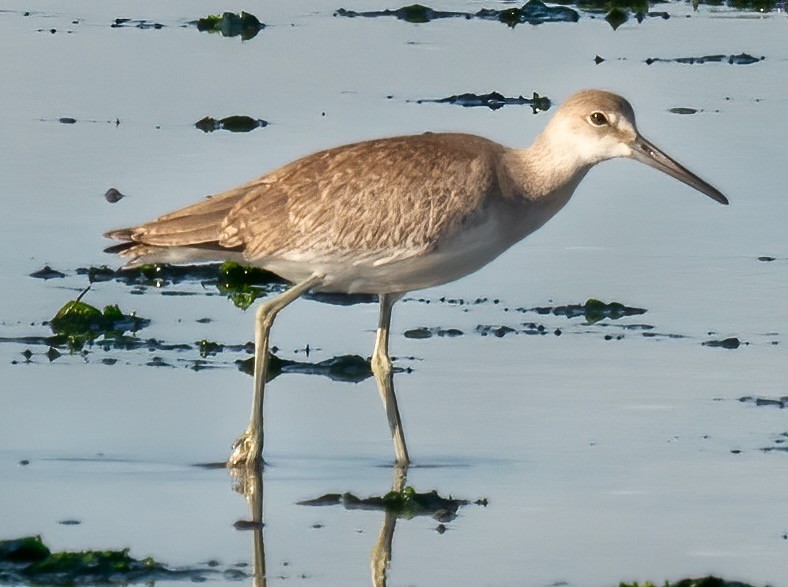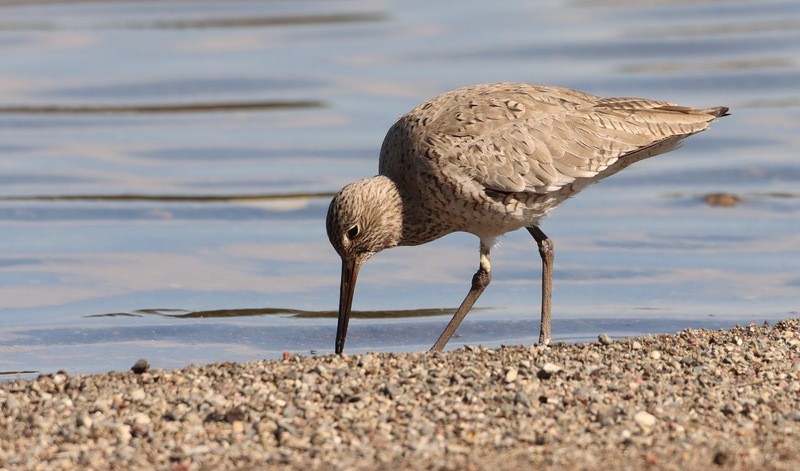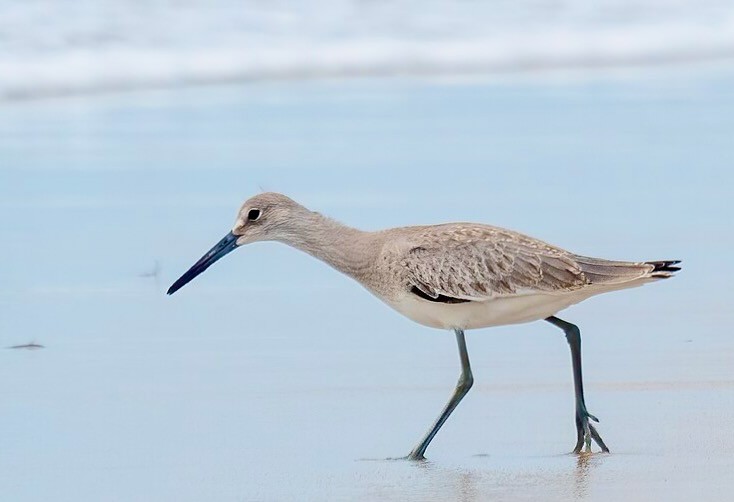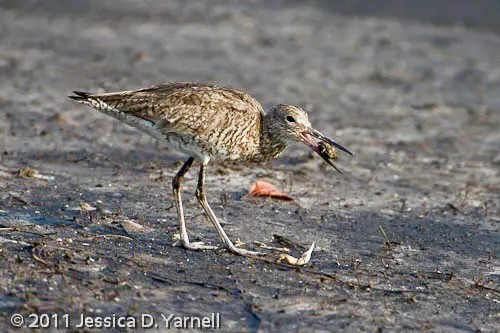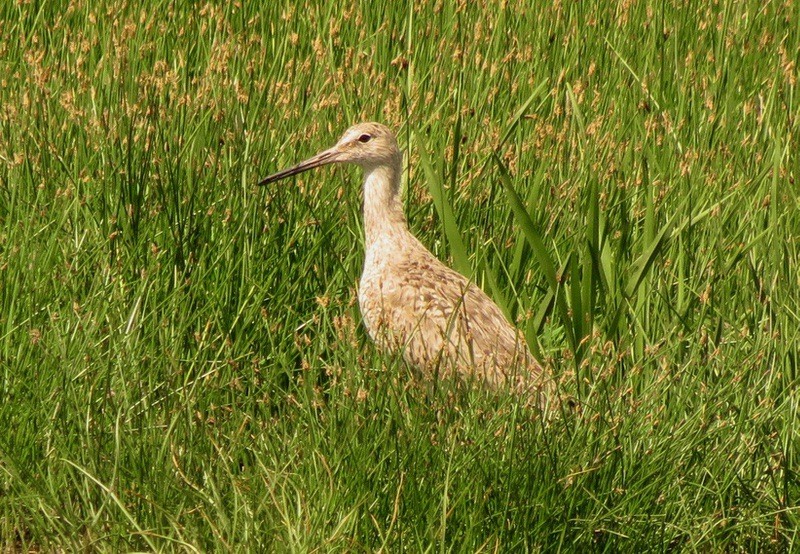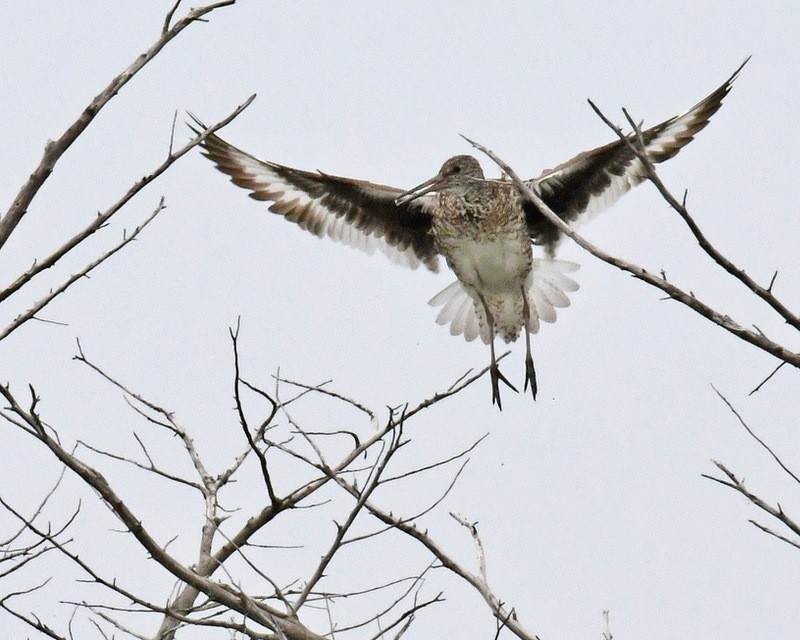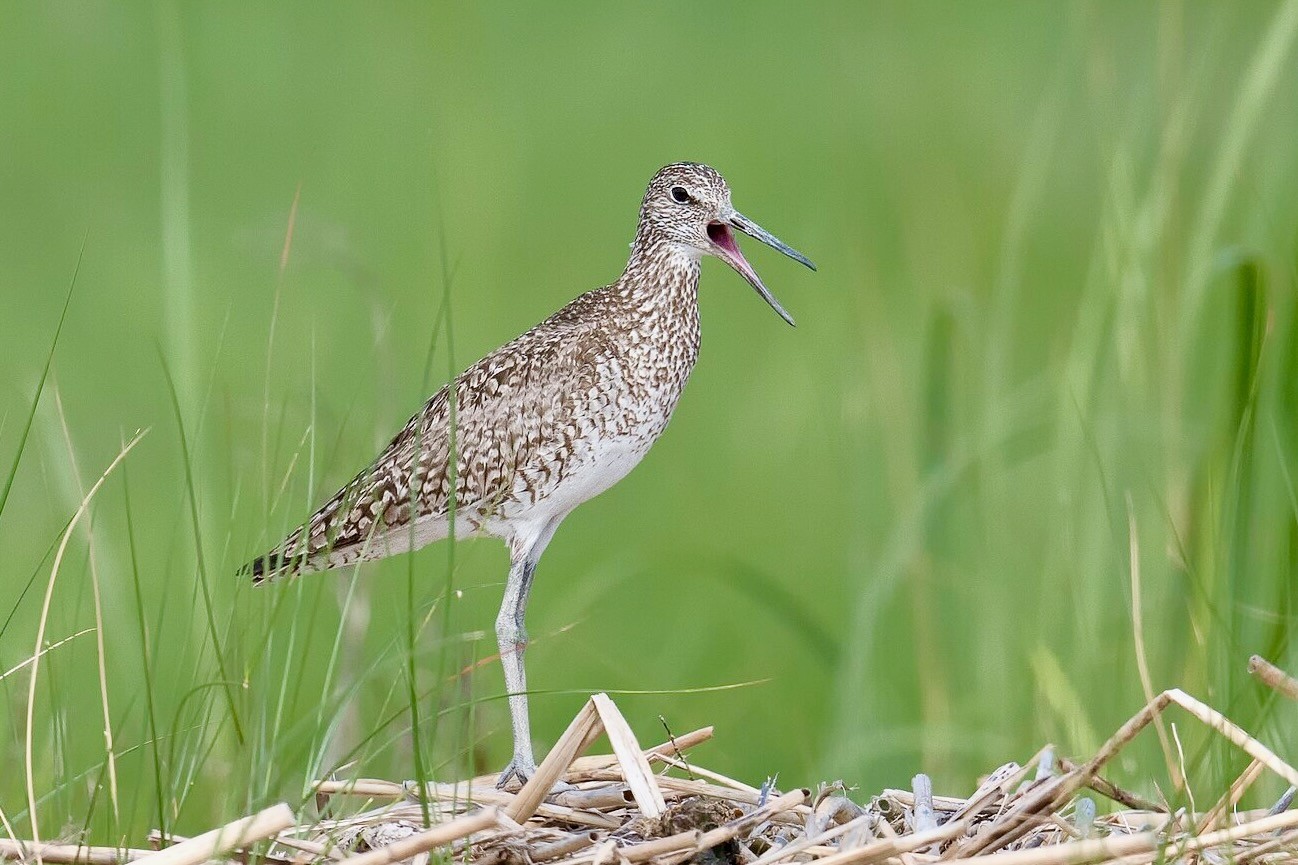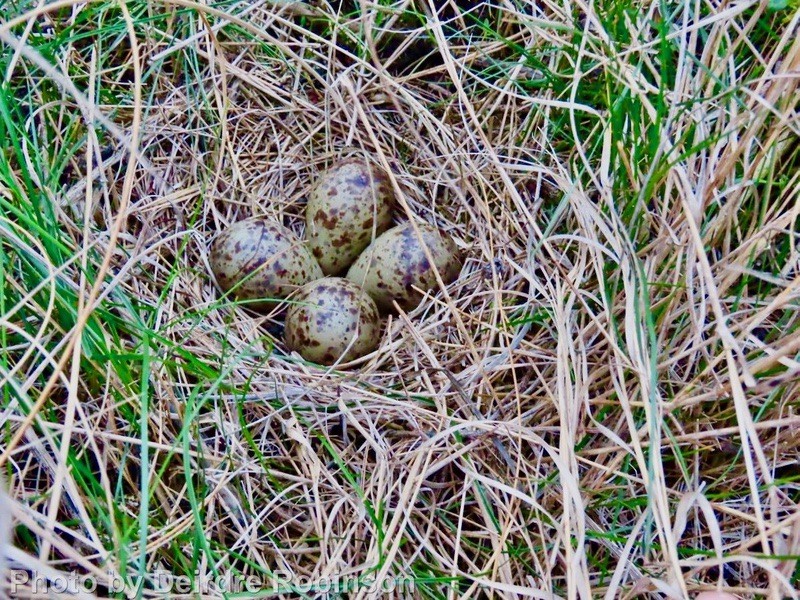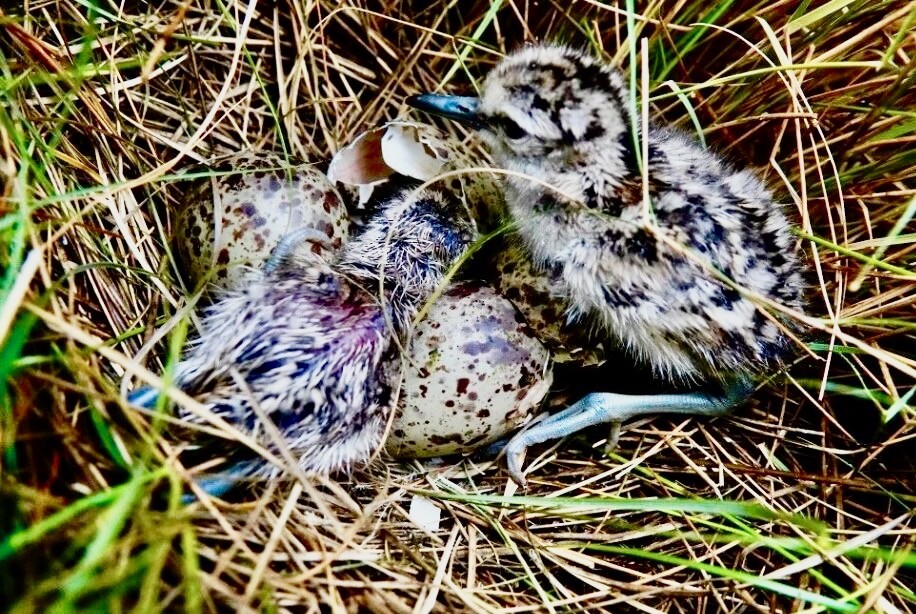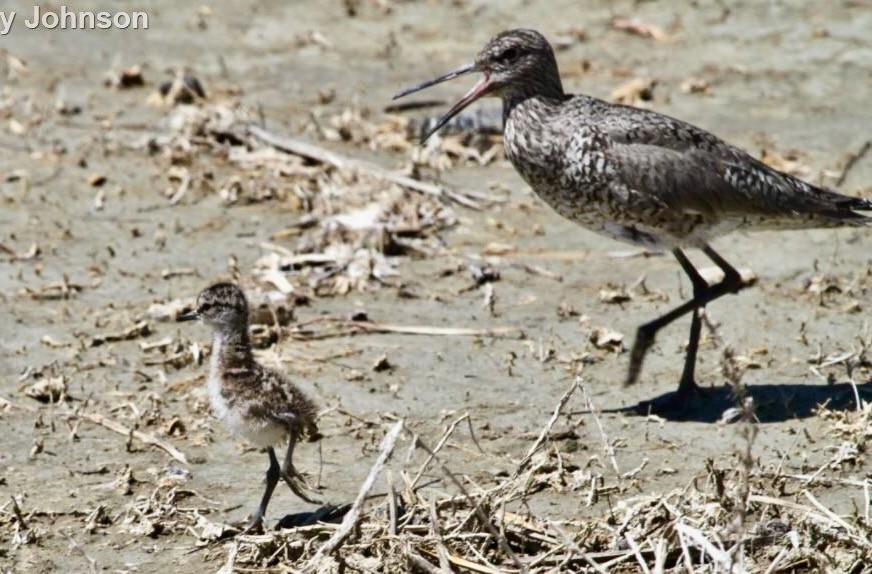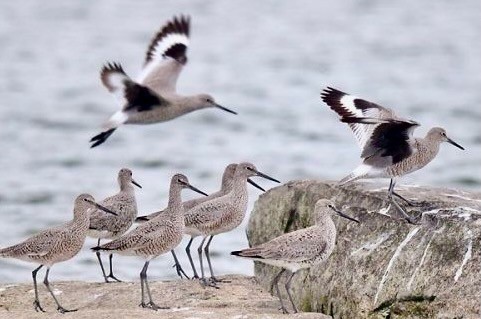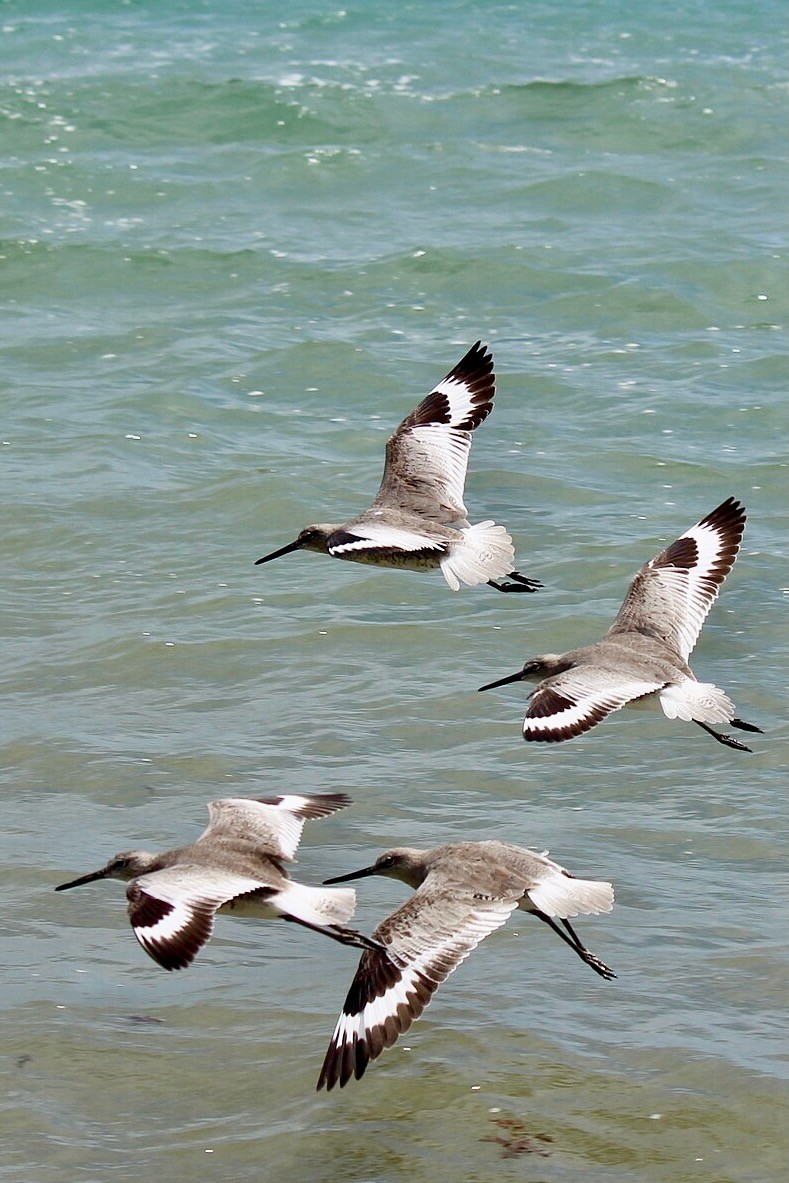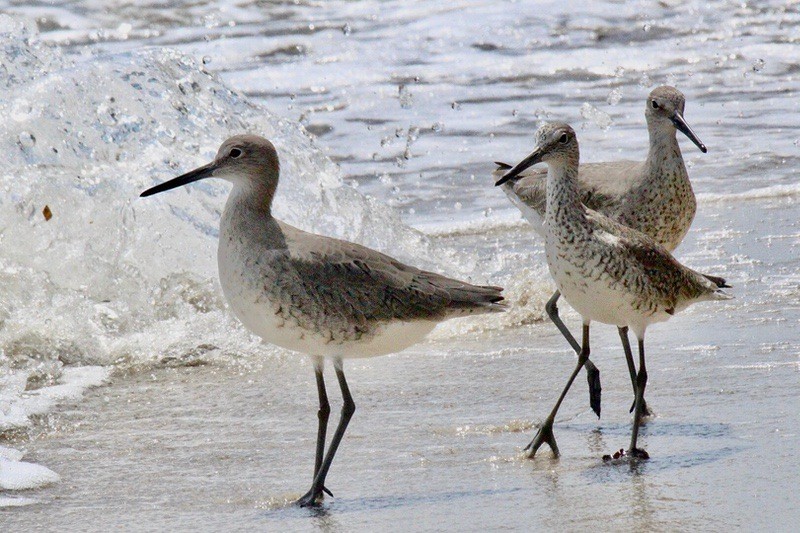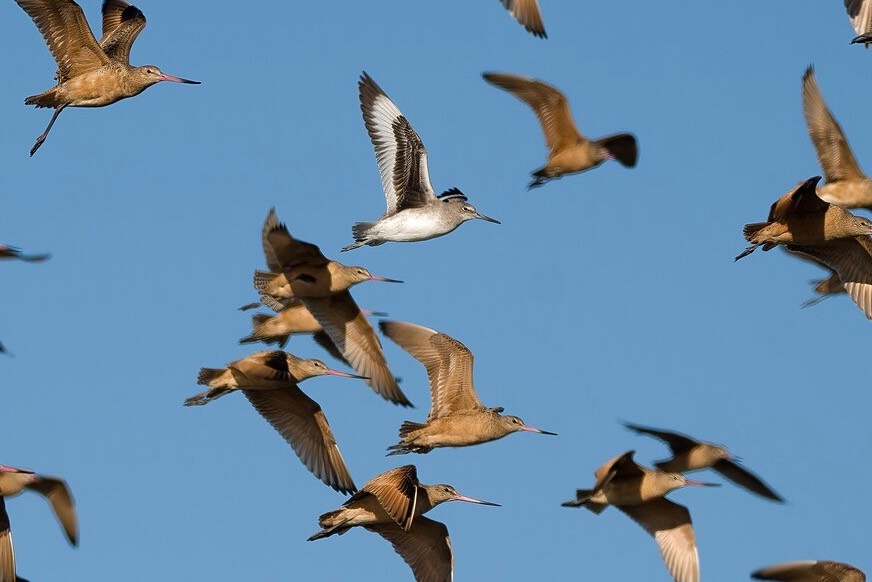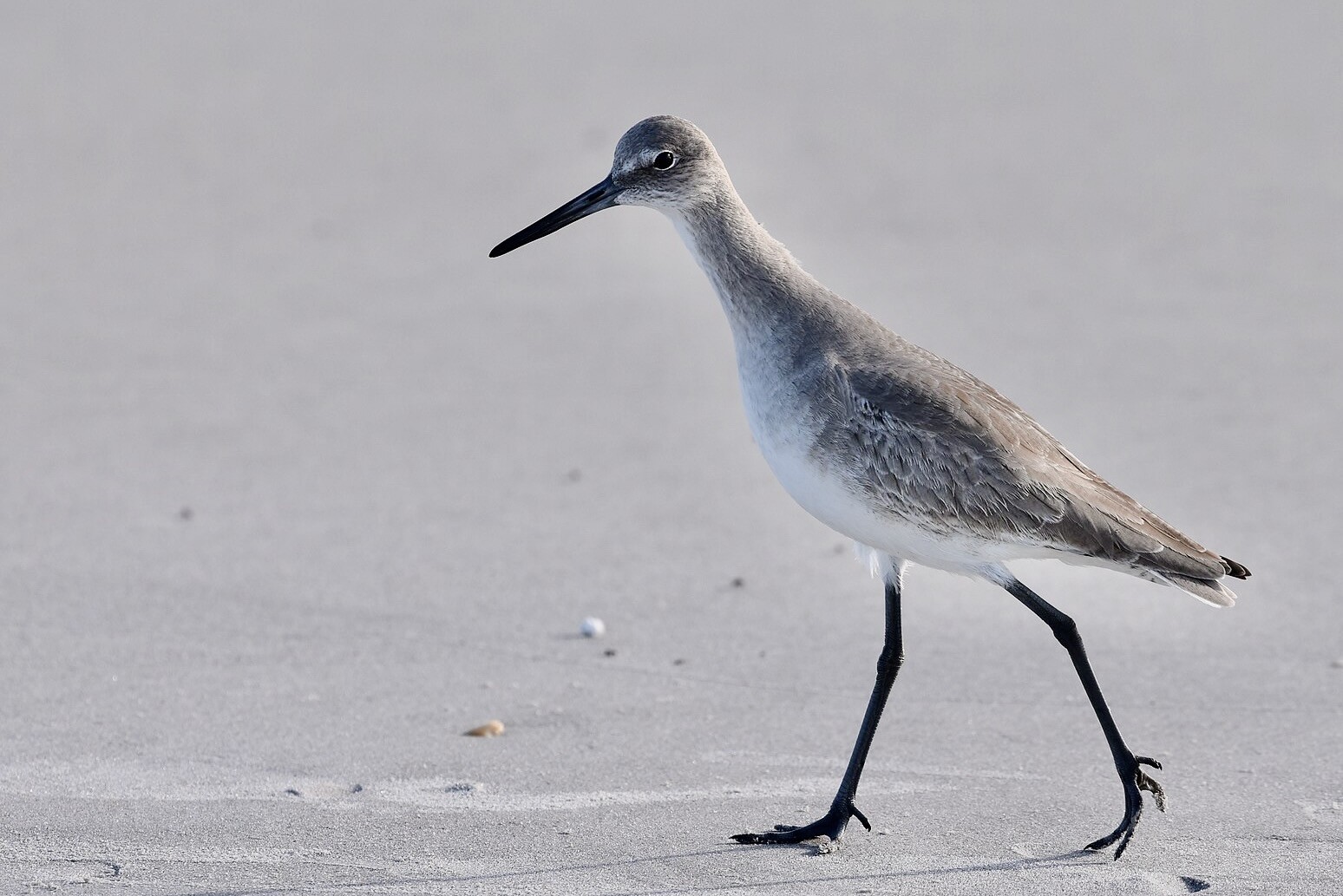Willet
Birdwatching records are available for Salter Grove from 2002 through mid 2025 but the Willet has only been sighted five times at Salter Grove, all before 2020. This large shorebird, not quite the size of a crow, prefers a coastal area with larger expanses of salt marsh vegetation and beach habitats than what the park has to offer.
Despite its large size, its mottled grayish brown plumage draws little attention against the muddy shorelines or marsh vegetation within the park. However, its presence is unmistakable as soon as its strongly marked black and white wings are flashed as it flies off, or when it makes its piercing "pill-will-willet" call.
The Willet nests in the salt marshes of Rhode Island and elsewhere along the Atlantic coast. Its wintering grounds stretches from the southeastern United States to as far south as Uruguay. A western subspecies of the Willet breeds in freshwater habitats and winters from northern California to Bolivia. These two subspecies show consistent differences in plumage, ecology, size, shape and calls, and may eventually be separated as full species pending eventual genetic analyses.
Historically, the Willet was considered a delicious addition to the dinner table. It was so abundant in southern New England that it was hunted for market. The demand was so great that by the late 1800's, it was only recorded as a migrant that was rare in the spring, and uncommon in the fall.
Since 1918, Willets as well as other birds subjected to hunting pressure have been protected under the Migratory Bird Treaty Act. Breeding populations have reappeared across southern New England but probably will never approach historic abundance.
Studies of marked birds have shown that the Willet tends to breed where it had previously bred or hatched, suggesting that it would be particularly vulnerable to changes in its nesting habitat. Coastal development, climate change, and sea level rise have already reduced suitable breeding habitat for the Saltmarsh Sparrow, another salt marsh specialist that is considered endangered.
Surprisingly, the Willet is not currently considered a species of concern in Rhode Island. Unlike the Saltmarsh Sparrow, it nests in the higher reaches of saltmarsh vegetation and thus is less vulnerable to extreme tidal flooding events. Data from two Rhode Island breeding bird surveys (1982-1987 and 2015-2019) documented that the number of nests has increased from 1 to 12 within a span of about 30 years.
For more information:
https://www.allaboutbirds.org/guide/Willet
https://www.audubon.org/field-guide/bird/willet
https://en.wikipedia.org/wiki/Willet
https://www.mass.gov/info-details/willet
https://www.fws.gov/law/migratory-bird-treaty-act-1918
Clarkson, C. E., Osenkowski, J. E., Steen, V. A., Duhaime, R. J., and Paton, W.C. (2023) The Second Atlas of Breeding Birds in Rhode Island. Rhode Island Department of Environmental Management Division of Fish and Wildlife. pp. 132-133.
Howe, Jr., R.H. and Sturtevant, E. (1899) The Birds of Rhode Island. p. 52.

